We first sat our bums on the Ruut back in July 2017 at its launch in north Poland and our initial impressions were good. After several months testing – over a challenging winter – how have we got on with the Ruut back in the UK?
Brand: Rondo
Model: Ruut CF1
From: Hotlines
Price: £3,299.99
Tested By: Rachel
Test Duration: 3 months
The Rondo Ruut (pronounced “root”) is a gravel bike designed to make the most out of all the trails that are at our disposal; from ragging on the road, to going long off the beaten track and coping when the going gets twisty and rough in between.
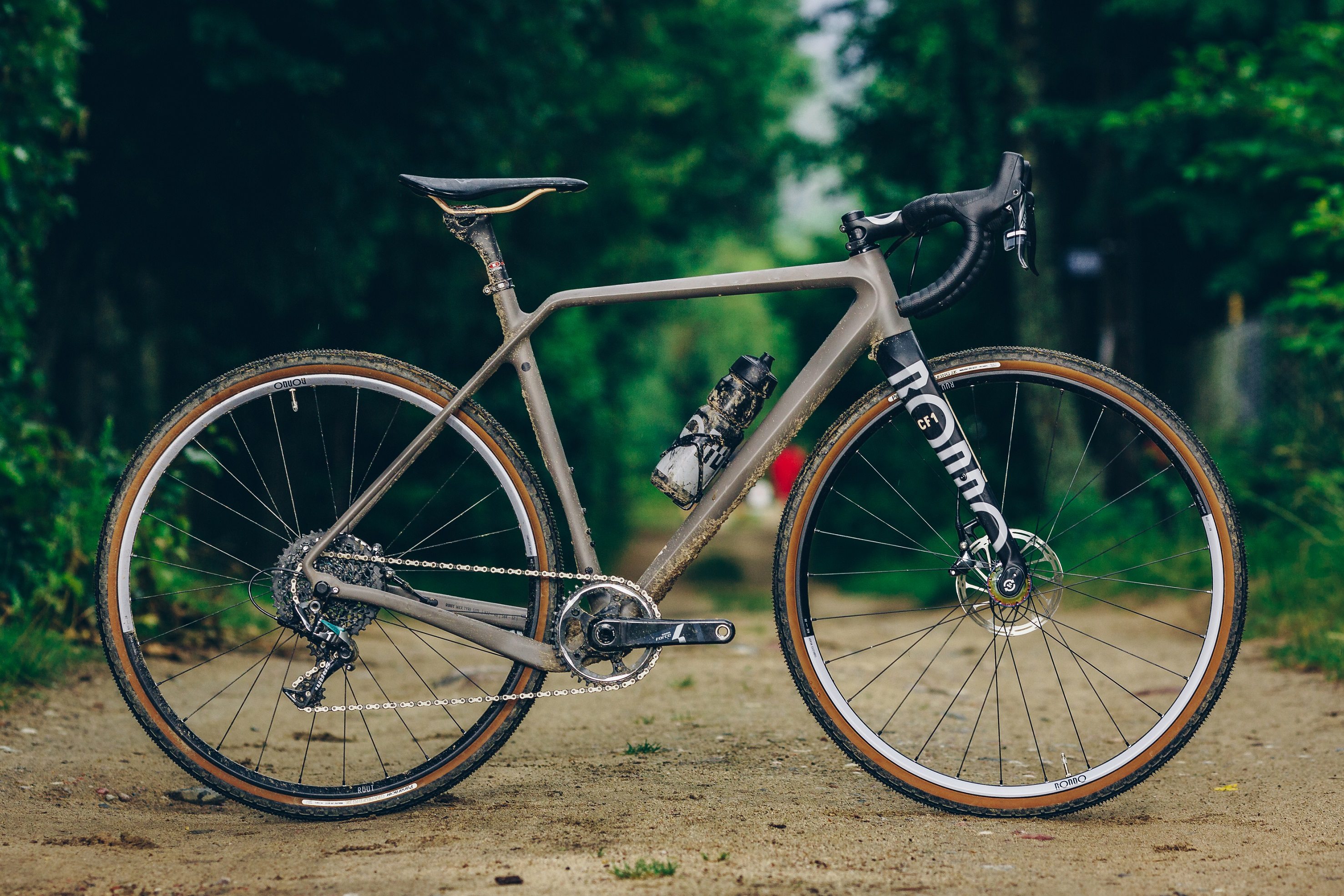
The standout feature of the Ruut is its adjustable geometry. It’s a concept that is now fairly familiar within MTB design but is still pretty unusual in the drop bar world. Using a switchable “TwinTip” chip which forms the fork axle, Rondo have developed a system which alters the angles of the Ruut to take the bike from a traditionally race geometry to something a little more relaxed and stable. The greater head and seat tube angles (70.5o – 71o and 73.0o – 73.5o respectively) also lower the cockpit by 10mm and decreases the rake of the fork by 13mm.

Another feature straight from MTB design is the shaping of the chainstays to give a tight back end – 420mm chainstay length – and buckets of tyre clearance. Officially there’s room for a 40mm width 700c tyre but a 43mm will fit and is specced on some of the models. All bikes are 15mm front and 12mm rear axles for resistance to twisting under power and braking and provide MTB wheel compatibility.

The Ruut is available as a bike in alloy (AL £1,700), steel (ST £2,000) and carbon (CF1 £3,300 and CF2 £2,700) versions with all featuring the carbon Twintip fork. Carbon (£1,800) and steel (£1,000) framesets are available too. Naturally frame characteristics and features differ slightly according to the properties of each material. The mouldability of carbon allows for an angled top tube which lowers the seat tube junction to give more flex and riding comfort and also can be run 1x or 2x. Conversely, the straight tubes of the alloy and steel versions result in a 1x only design and shock absorption from the material rather than top tube design. All frames have two sets of bottle bosses (the steel gets a third set) and fork bosses too.

Across the range the Ruut is available in four sizes (S – XL) with reaches 373-381mm to 400-406mm (there’s a slight variation in the reach depending on the fork chip position). As always it’s well worth checking your size and demo-ing a Ruut before you buy if you can. Whilst on paper the medium was bang-on for me (382-388mm reach and 554-555mm stack) the components size it up to the point I’d have been better on a smaller frame – the seat post has a 20mm layback and the bars a 80mm reach and 120mm drop. For testing an in-line post and a shorter stem did the job but as it’s high-end finishing kit swapping out would be rather expensive and irritating solution.

The Bike
We had the flagship CF1 on test. Wheels, which are standard across all models, are built from Rondo’s own hubs and rims which have a 20mm internal width and are specced with 35c Panaracer Gravel King tyres (the steel and alloy versions get bigger volume tyres for added comfort). The hubs and spokes have an oil-slick finish, not quite my cup of tea but they were pretty popular with lots of my mates. As you’d expect for a flagship model the components are top notch, it boasts SRAM Force brakes and 1x drive train, an Easton carbon EA70 bar and EC90 layback seatpost. The matching colour scheme of the Fabric Scoop saddle is a nice touch.


The build kit is top notch as you would expect for the price but I had a few little gripes with some finishing touches. First up, the cables aren’t lined through the frame so are pretty rattly on the rough stuff. On the subject of cabling, the position of the cable port on the top tube is designed for running Euro-style brakes, i.e. right hand rear. This means the loop of the rear brake cable doesn’t neatly flow round the head tube and looks rather kinked as it takes a sharp turn from the left hand lever down, I faffed around for ages trying to improve the run having assumed that the bars had been twisted when they were removed for shipping before I realised it was a design thing. My other grumble is that the tyres didn’t come tubeless. Certainly, none of this is deal-breaking stuff, but could be a bit irritating if you’ve paid out over three grand for a bike and are particular about such things.
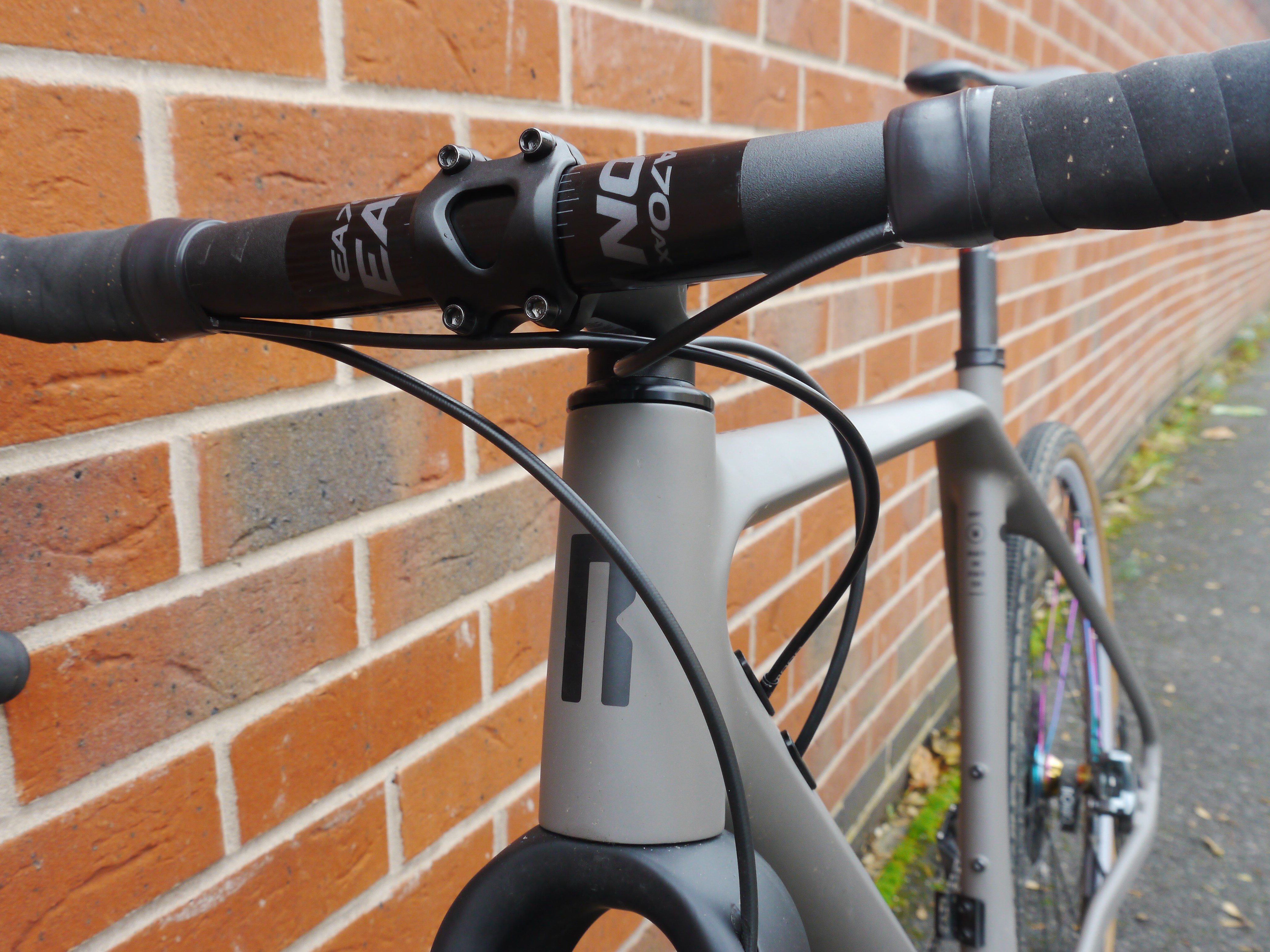
The Ride
The first thing to note about the Ruut is how incredibly natural it feels whatever the terrain underneath the tyres. It’s one of those things that you don’t actually notice when riding the Ruut itself but when you ride the same trail again on something different you start to appreciate how good the Ruut is. Riding on the gravel trails and paths for which it was designed, it happily laps up the stutter of the trails giving an extremely comfortable ride and great reactive acceleration too with the frame nicely balancing compliance and stiffness.
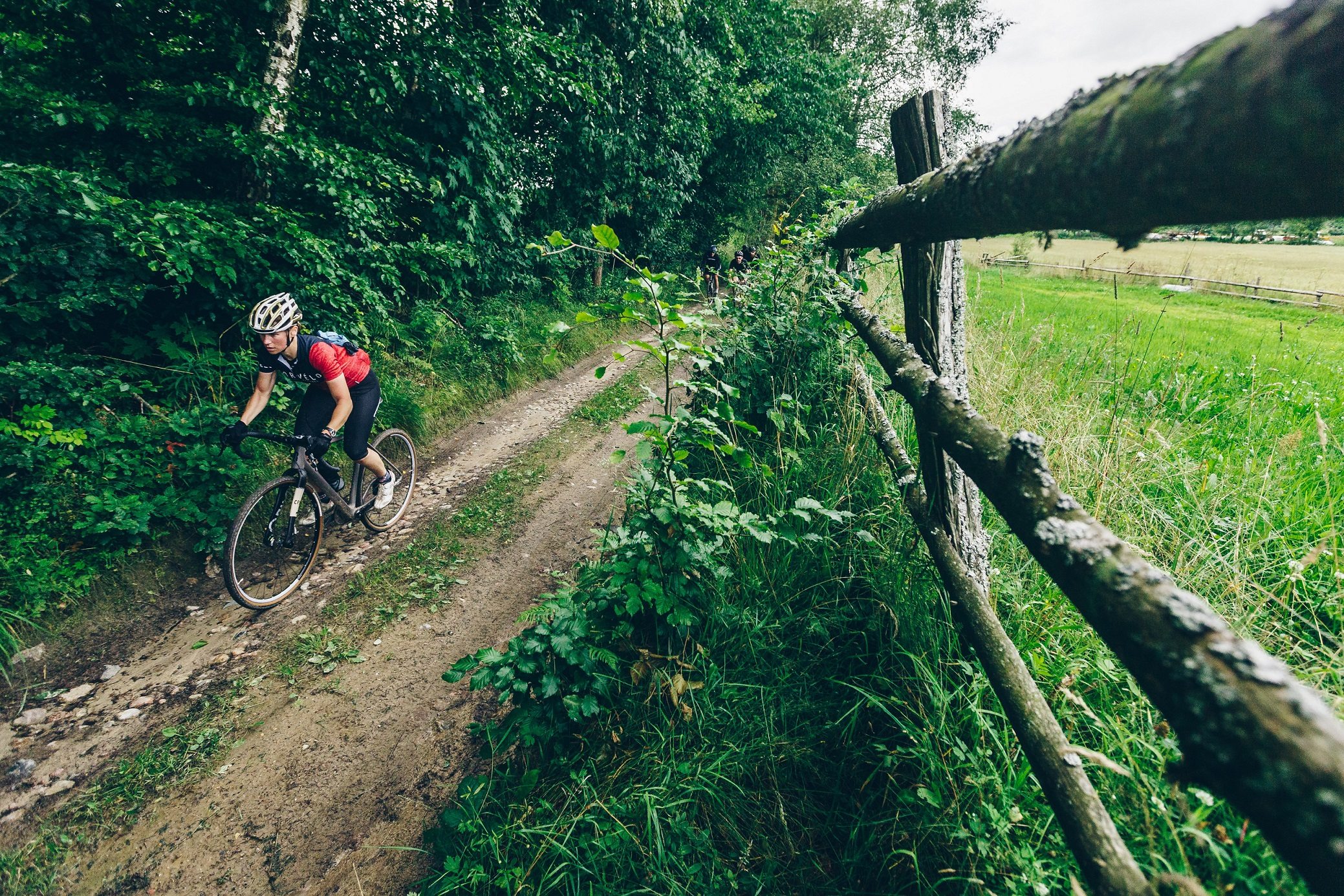
The Ruut is designed more to be a long distance gravel bike but where I found it really excelled was the more technical terrain where the balanced geometry, short chain stays and bolt through axles all come to the fore. It’s an incredibly stable bike to ride (as verified by achieving my record on the no-hands-off-road-ride test) and happily holds its position as things get twist, rocky, steep or loose. It takes on tight and twisty singletrack with ease, with neither the geometry nor the handling feeling out of place. My previous experience of riding my local wooded singletrack and red trail centre MTB trails on a drop-bar bike with similar geometry is skittering and bouncing around on the tops on the wrong side of control. The feel of the Ruut is completely different to this and it seems to lap up the trails and made them the most fun they’ve ever been.

Swapping over the fork chip initially gives the bike quite a different feel but, like most things, once you are tuned into the geometry you stop noticing it and the Ruut handles varied terrain well in both positions. In the low position it certainly feels more aggressive and reactive but still stable enough until it gets really steep and fast when then the high position feels more reassuring. Conversely, whilst less race-like, I found the high position to make the bike plenty sensitive enough to the power I could put through the cranks.
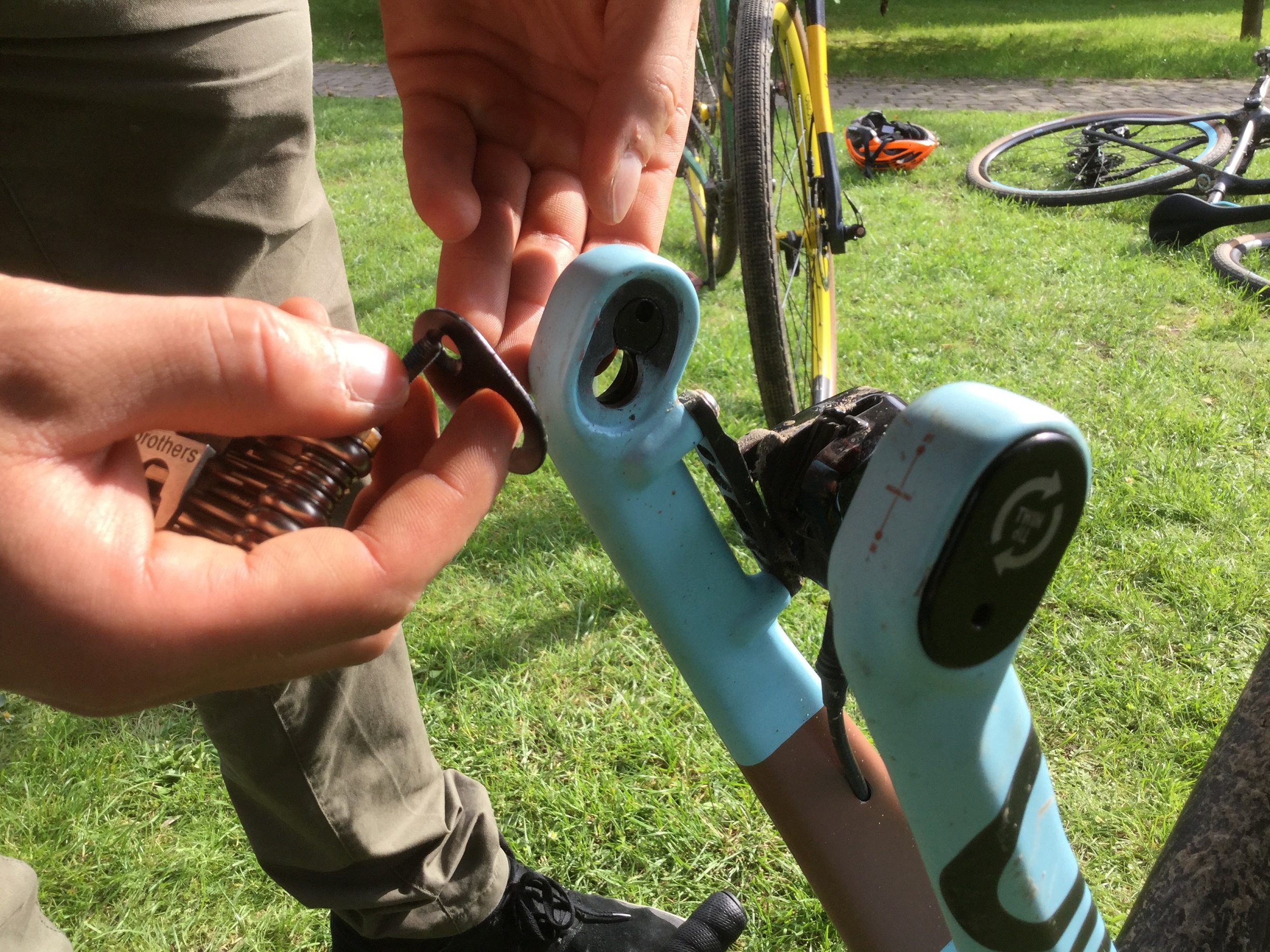
Even though it’s straight forward to do (though probably not something you’d do mid-ride) the Rondo guys themselves don’t think people will spend much time swapping and changing the fork chip. Certainly I was riding quite varied terrain on the Ruut and I didn’t find myself swapping the chip as much as I’d thought I would – I really liked the handling of the bike in the high position so saw no reason to change it and if it wasn’t for the review, probably wouldn’t have bothered after the first swap over.
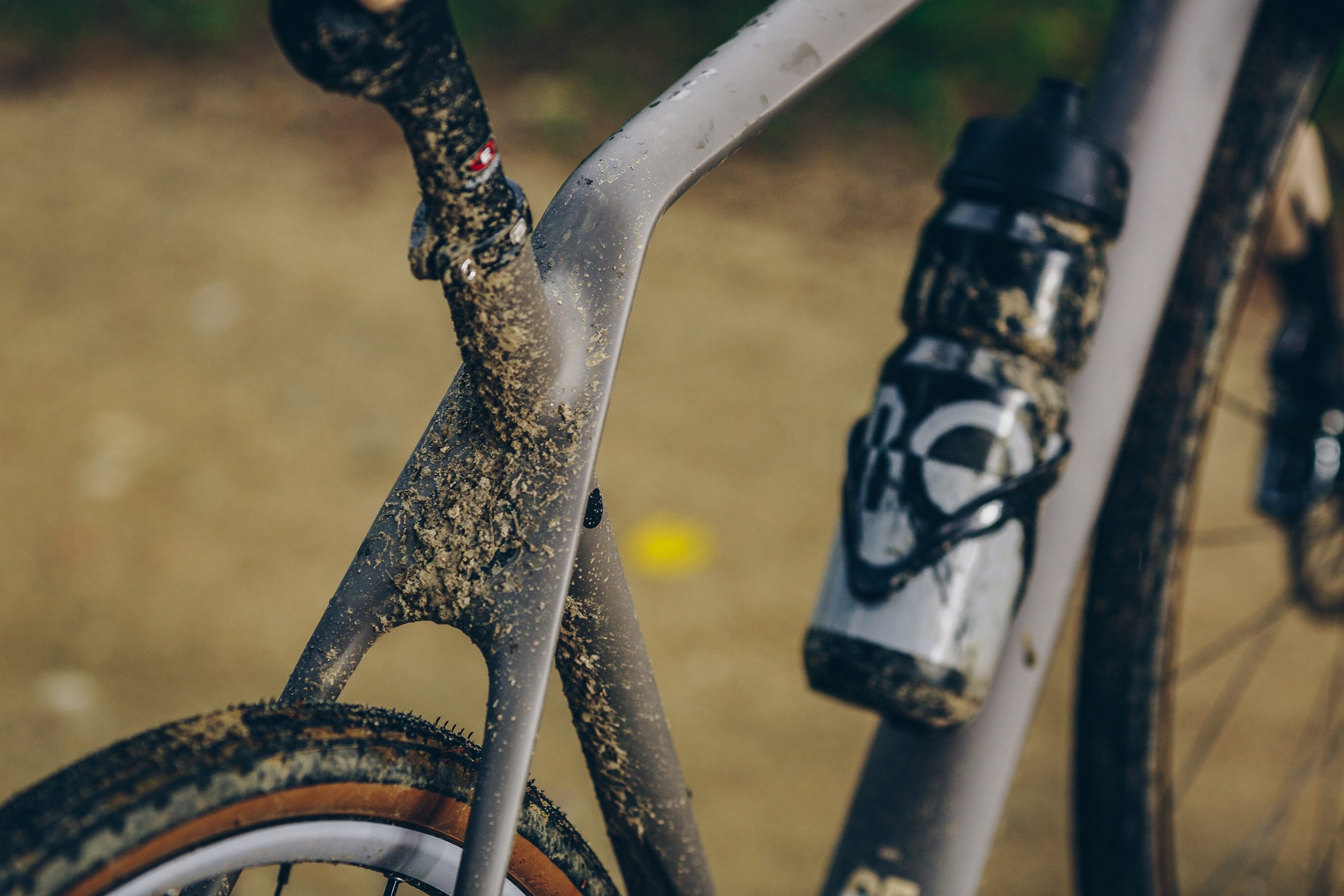
Whilst I didn’t change the fork chip over much I did make use of the ability to stick in some smaller 650b (27.5”) mountain bike wheels with a chunkier 2.0 tyre, swapping between the two wheelsets depending on the type of riding I was doing. And if I thought this bike handled well on technical trails with its 700c wheels it was even more fun with littler wheels in it and I absolutely loved ragging it round my local (usually) MTB trails. So much so that in the time I had the Ruut on test I didn’t ride my hardtail MTB once.

I was really impressed by the performance of the Panaracer Gravel King on hard packed and, erm, gravel trails. They’re nice and supple and so provide lots of grip but tough enough to run at the low pressures you’d want off-road (even with tubes and riding on some naggery rocky trails I only had one puncture and that was from a thorn). On the downside they are diabolical in the mud. They seem offer no grip and shedding is poor too so they take a while to shed when you’re back in the clear.

Although in its element off-road, on the Ruut performs well on the Tarmac too. The Gravel Kings are roll well enough that you can get away without swapping them for every ride and certainly don’t feel excessively slow on the linking roads between the trails. It was only on pure road rides that I missed having a double chain set, not so much due to the lack of range but for the jumps between one gear and the next. If I was going to ride this on the road more regularly I’d consider adding a front mech or perhaps just learn to spin at a different cadence… On the upside, it made me realise that despite my puny legs, I’d not had experienced any of the disadvantages of a 1x set up off-road, instead I just got to reap the rewards.

Durability
I had a couple of durability niggles with the brakes and shifting which, although not out the ordinary, I wouldn’t expect so early on in a bike’s lifespan. Firstly the rear brake completely gave up the ghost after a couple of months, with the lever pulling straight to the bar. It was easily sorted with a quick bleed (thanks to Leisure Lakes Nottingham for sorting it for me as I didn’t have the requisite bleed kit). In my experience you can get away with needing to bleed a lot of hydraulic brakes for a while before they completely fail but with the Force it went from perfectly fine to non-existent over the course of a single ride. The grit.cx International Headquarters see a lot hydraulic drop-bar brakes through our workshop doors, from both the big “S” companies, and this is the first issue we’ve had for a long time, so are happy to chalk things up to bad luck. On the subject of brakes, the rear adapter bolts are a little awkward to get to and have a pretty shallow T25 head so you have to be really careful not to round them.

I also needed to recable the mech while I had the bike on test. Again, not a big deal (although the cable run out the lever is pretty awkward out the lever necessitating the removal of your bar tape), just surprising that this was required so early on. On investigation I wonder whether the cable routing might have contributed to this early change. Cable outer runs the full length of the down tube until it pops out to go under the BB before another piece of outer protects it through the chain stay to the mech. This means you have bare cable fully exposed to all the grime and water that splashes up under the bike which will work its way into the outer and cause friction.

So, while the brake was just bad luck, the cable routing probably makes the Ruut vulnerable to a mucky gear cable and so will require more maintenance to keep things running smoothly.

Three things we liked:
- The incredibly reactive yet stable handling
- The comfort of the frame – this is a bike you can ride for a long time over harsh terrain
- The adaptability for different wheel size and bags of clearance for chunky tyres
Three things that could be improved:
- The rattle of the internal cables and exposed run under the BB shell
- Component sizing relative to the frame size
- The Marmite looks of the top tube and colour-scheme: it’ll make some people jump at it but I wasn’t sold
Overall:
The Ruut did everything I’d expect of it and much more. It is stiff, fast and reactive but still handles brilliantly well when the going gets rough. For a bike that’s aimed more at going hard and fast, the Ruut is at its best on the more technical terrain where its superb handling and compliance is evident in spades. A change of tyre or wheel to something slicker or chunkier gives the bike even more capability across road, gravel and more traditional MTB trails, perfectly fitting the bill as a 3-in-1 bike.
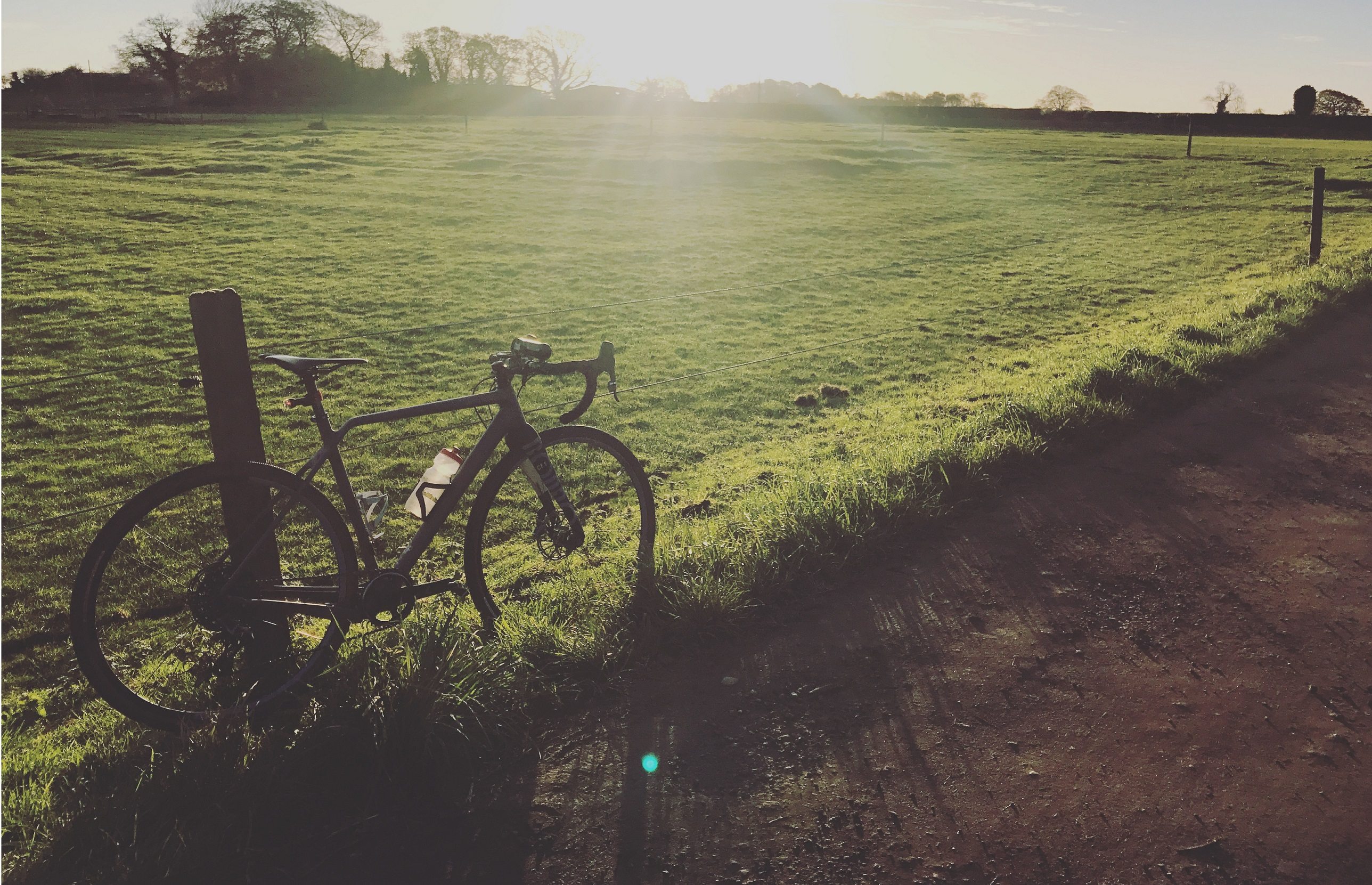
Full Specification
- Frame // Rond Ruut Carbon
- Fork // Rondo Twintip Carbon 1.5 – 1.125
- Wheels // Rondo Sealed Bearings on Rondo Superlight Rims
- Tyres // Panaracer Gravel King Sk 700c X 35
- Chainset // SRAM Force 1 386 40t
- Bottom Bracket // SRAM Bb30
- Rear Mech // SRAM Force 1 11-Speed Type 2.1.
- Shifters // SRAM Force 1
- Cassette // SRAM XG 1175 10-42 11 Speed
- Brakes // SRAM Force 1, Hydraulic Disc
- Stem // Rondo
- Bars // Easton EA70 AX 440mm
- Seatpost // Easton EC90 Carbon 27.2 X 350
- Saddle // Fabric Scoop Flat Cr-Ti
- Size Tested // M
- Sizes Available // S, M, L, XL
- Price // £3,299.99
- Weight (including pedals) // 9.0kg

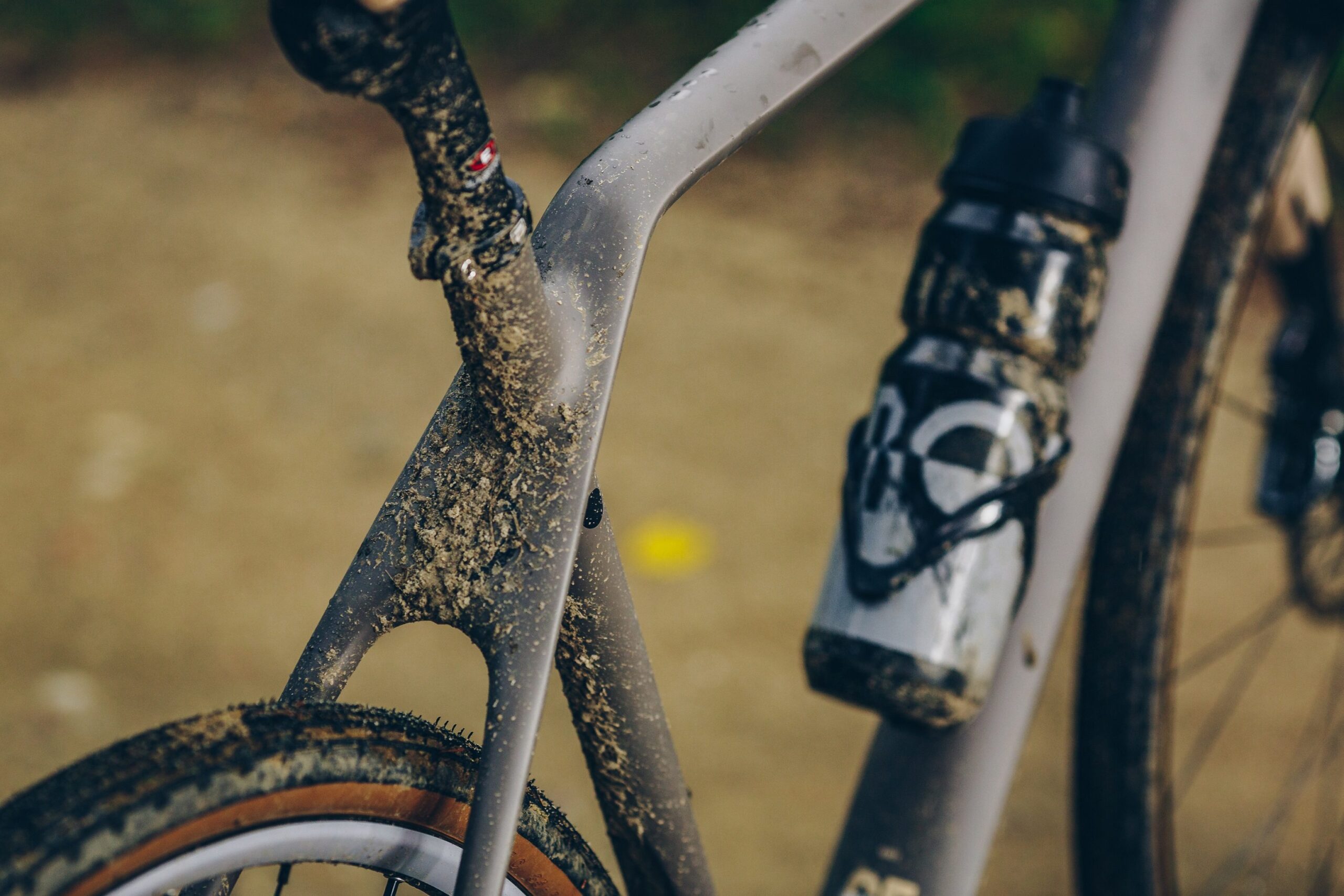




Thanks @rach – guess I really am a bit stuck between sizes, then. Maybe a size medium with an inline seatpost and 80mm stem could do the trick.
Very well written review, by the way!
@rednaskela – thanks for the feedback :). I think I’d agree with your sizing (although it seems a shame to remove the fancy seat post!)
It’s also worth checking the stand over height, I ended up with not much seatpost showing. I don’t think this made any difference to the riding, I had plenty of room and the top tube / seat tube junction is fairly low as the seat tube extends a way above this, it just looked a bit odd (you can sort of see this in the last semi-silhouette picture).
We’re that cursed height that always falls between frame sizes, it’s the bane of my riding life!